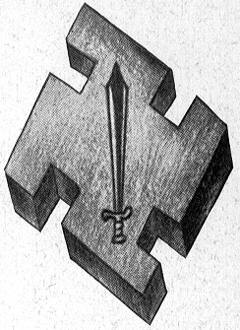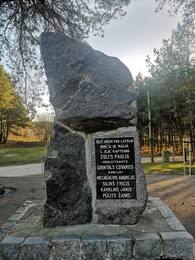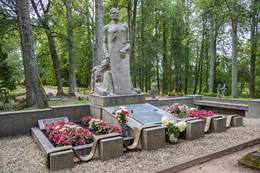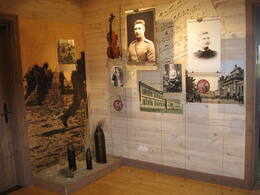Independent Student Company I Wars of Independence

The separate student company was founded on December 20, 1918. The creation of the student company is a significant event in the history of Latvia. It was a time when the Latvian state had just been founded. With patriotism in their hearts, students and young people united to defend their country.
Although the independence of Latvia was declared on November 18, 1918, the real power in Latvia belonged to the German occupation authorities, who did everything to hinder the work of the Provisional Government. The Provisional Government was weak, it had no money, nor any other material resources. In mid-November 1918, units of the Red Army began advancing westward to gain control over Eastern Europe.
The Latvian student corporations "Selonija" and "Talavija" began to take active action with the aim of defending the Provisional Government of the newly formed Latvian state and the idea of their own state. On November 23, 1918, a meeting of Latvian students convened at the Vilnius Olava Commercial School in Riga. The goal of this meeting was to ensure that all Latvian students placed themselves at the disposal of the Provisional Government. During one of the subsequent discussions, the student Reinholds Muške proposed creating a joint student combat unit. His idea found receptive ears. At the initiative of the corporations "Selonija" and "Talavija", a Separate Student Company was established on December 20, 1918, which was subordinated directly to the Ministry of Security. The company consisted of more than 210 men. Approximately half of the company's personnel were members of the five oldest Latvian student corporations Lettonia, Selonija, Lettgallia, Tālavija and Fraternitas Lettica. Students from outside the fraternities, as well as high school seniors, also joined the company. Captain Nikolajs Grundmans was appointed company commander.
This unit was manned, minimally trained, and when the Bolshevik troops were approaching Riga, it went to guard the Provisional Government in Liepāja. There, a thorough training process took place to turn a civilian student into a soldier. At the same time, they guarded railway bridges, as the railway ensured the movement and supply of troops. In February 1919, they were sent to the Latvian Separate Battalion commanded by Colonel Kalpaks, joining it and participating in the battles for the liberation of Courland in the spring of 1919. The Latvian Separate Battalion was reorganized into a brigade and the Student Company was renamed the Separate Student Battalion. There were many battles in the spring of 1919. The Student Company lost 12 officers in the Freedom Fights. After the liberation of Riga, the student battalion was transferred to various military institutions and headquarters.
During the Bermont army's attack on Riga on October 9, 1919, a student battalion was re-established. Its formation was led by Captain Fridrihs Sommers. The student battalion included some of the soldiers of the former Separate Student Company, students of the Latvian University of Applied Sciences, as well as civil servants and schoolchildren. Together with the Latgale Division regiments, the Student Battalion participated in the pursuit of the Bermontites to Dobele and Auce. After returning to Riga, the volunteers from the battalion demobilized. The war was over for them, and their study and working lives began.
More information sources
1. The State of Latvia and its Men: Student Group. Published in the official newspaper "Latvijas Vēstnesis", 17.09.1998., No. 270. Available: https://www.vestnesis.lv/ta/id/49760 [accessed: 06.05.2021.].
2. Latvian Radio 2 Latvian Centennial Story Articles “Studentu rota”, 2017. Available: https://lr2.lsm.lv/lv/raksts/latvijas-simtgades-stastu-raksti/studentu-rota.a96849/ [accessed: 06.05.2021.].
3. Student participation in the Latvian Freedom Struggle - a page written in golden letters in the history of the University of Latvia. Published on the LV portal on 11.11.2016. Available: https://lvportals.lv/dienaskartiba/283270-studentu-daliba-latvijas-brivibas-cinas-zelta-burtiem-rakstita-lappuse-latvijas-universitates-vesture-2016 [accessed: 06.05.2021.].
Related timeline
Related objects
Monument to Captain Zolt and student soldiers
Located in the city of Jurmala, Sloka, on the Gulf of Riga, in the Kaugurciems dunes.
The memorial was erected in 1934, destroyed during the Soviet occupation, but restored in 1989. In Kaugurciems, on the morning of May 18, 1919, a battle took place between the Latvian National Force, a company led by Captain Paulis Zolts (~145 men), and the Red Army troops. The event is special in that the battle took place in the most adverse conditions, demonstrating military courage and faith in the Latvian state.
During the night before the battle, a storm broke out, and sand covered the positions and weapons. In addition, inadequate ammunition was received. When the enemy attacked, Captain Zolts' soldiers counterattacked at the decisive moment, using rifle bayonets and winning the victory.
Zolts was an experienced Latvian officer who had participated in the Russo-Japanese War, World War I, and the Latvian War of Independence. His brother was also a soldier, while his son, as a medical student during World War II, was a medic in the Latvian Legion of the German army, and fell while carrying a seriously wounded soldier from his positions.
Today, you can visit a memorial site built on the site of the battle. Nearby, there is a beautiful seaside forest and the sea, allowing you to learn about history in a pleasant environment.
The final resting place of Colonel Oskars Kalpaks
Located in Visagala Cemetery, Madona County
On display is a monument to Oskars Kalpaks, unveiled on July 10, 1927, by Kārlis Zāle and Arnoldis Dzirkalis - a three-figure composition, in the center of which is an ancient Latvian warrior with a shield and sword in his hands, and on both sides of him are two warriors standing. At the foot of the sculptural group, a bronze plaque is placed obliquely on a granite base, on which is engraved a text that also includes a poem by Edvards Virza dedicated to Kalpaks.
Oskars Kalpaks fell on March 6, 1919, near “Airītē”, on the side of the Skrunda-Saldus road, and his remains were transferred from the Liepāja Northern Cemetery to the family cemetery in Visagala on September 18.
The monument was unveiled by the chairman of the Colonel O. Kalpaks monument committee, General J. Balodis, in the presence of the then President of the Republic G. Zemgalas, Prime Minister M. Skujenieks, Speaker of the Saeima P. Kalniņš, Minister of War R. Bangerskis and K. Ulmanis. The foundation stone of the monument was laid on June 19, 1925. The stone for the monument was taken from the colonel's native home in Siena Marsh, on this stone O. Kalpaks loved to play the violin in his childhood.
Oskars Kalpaks Museum and Memorial Site “Airītes”
The Oskars Kalpaks Museum and Memorial Site Airītes is located between Saldus and Skrunda near the A9 highway. The exhibit has extensive information about Colonel Oskars Kalpaks and his battalion, and shows the history of the Latvian National Army and the memorial site Airītes. The exhibit reveals Colonel Oskars Kalpaks as a personality, as a soldier and as a fighter for Latvia's independence. Audio logs in Latvian, English and German are also available as part of the exhibit. They emphasize the importance of the historic events of 1918/1919 in the protecting the statehood of Latvia. The museum building has been restored.
Entry is free; guided tour – for a fee. The complex has a recreation area, a park, an obstacle course, it is possible to take various classes, and there is a seminar hall for up to 30 people.







